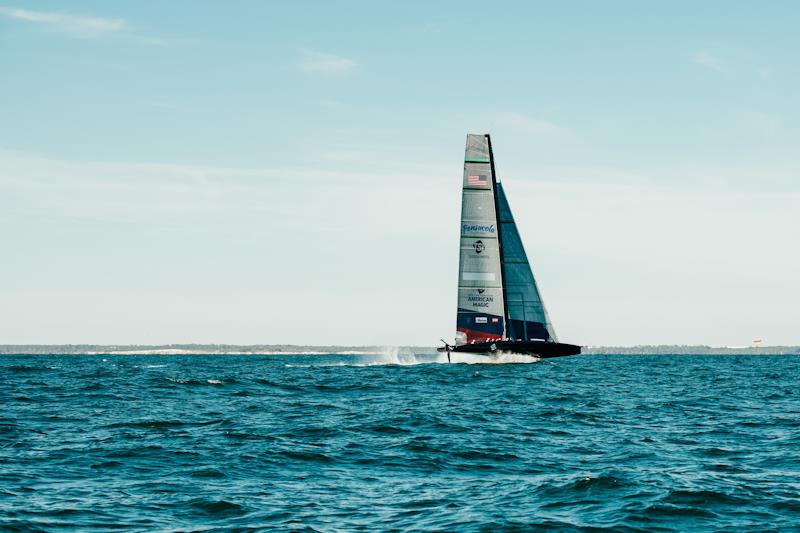
Getting Better for Jeddah: How America's Cup Teams Use Wireless Load Sensing To Be At Their Best
by Cyclops Marine 27 Nov 2023 17:00 UTC

American Magic in training © NYYC American Magic
Long having been synonymous with tradition, the world's oldest international sporting competition has become increasingly associated with the breaking of convention. This will be more evident than ever as the second preliminary regatta comes to Jeddah, Saudi Arabia from 29th November - 2nd December.
But new settings are just the latest examples of the constant evolution of the America's Cup. The biggest developments that engross onlookers around the world, are, of course, the leaps forward in technological innovation that come with every passing Cup.
Some innovations appear for one AC campaign, and are gone the next. Others develop and spread through the teams. The latter is true of Cyclops wireless load sensors. Having been developed (in part) alongside America's Cup sailors during the 36th campaign, they are now being used by the majority of teams dreaming of lifting the Auld Mug next year.
With every team stacked with talent both on and off the water, and with everyone equipped with an unprecedented level of high-performance equipment, harnessing data has become more important than ever. What decides who wins and loses is who can get the most out of the tools they have. That is where wireless load sensing is instrumental.
When marginal gains are the difference between triumph and misery, Cyclops sensors give you the edge. With wireless load sensors installed in key positions in the rig, the teams receive live load data via onboard displays, with all data also logged for post-sail analysis.
Data can also be displayed via the Cyclops app, and is ready for export to sailing analytics software. Live and logged data allows them to fine-tune their settings with unmatched accuracy, adjusting to conditions and ensuring peak performance at every critical moment.
While load sensing has been utilised in the America's Cup for some time, the extreme accuracy, reliability and simplicity of Cyclops sensors has made them hugely popular since arriving on the scene. Cyclops sensors measure load second-by-second using an inline method of strain gauging which delivers accuracy to within 1% of working load.
Traditional solutions have also been easily damaged and typically require regular re-calibration. Cyclops devices are all pre-calibrated, and their extreme durability means they can be installed and left onboard for months at a time.
These characteristics have not only made them the preferred choice for America's Cup teams facing the rigours of intense testing and training, but also for the majority of IMOCA 60 skippers hurtling towards the mind-bending extremities of the Vendée Globe.
Being equipped with a range of Cyclops sensors will empower the teams to hit the water in Jeddah in unfamiliar surroundings, fully prepared with a bank of precision load numbers. By hitting the Cyclops numbers they know will work for the conditions they can get up to speed quickly.
As is so often the case with America's Cup technology, the trickle down of Cyclops load sensing to every level of the sport has been rapid and wide-reaching. From the AC-inspired 60ft Mini Maxi 'Flying Nikka', to the winners of both the 49erFX Euros and the J/70 Worlds earlier this month, Cyclops sailors are everywhere.
Find the sensor for your boat, or contact Cyclops for a consultation.